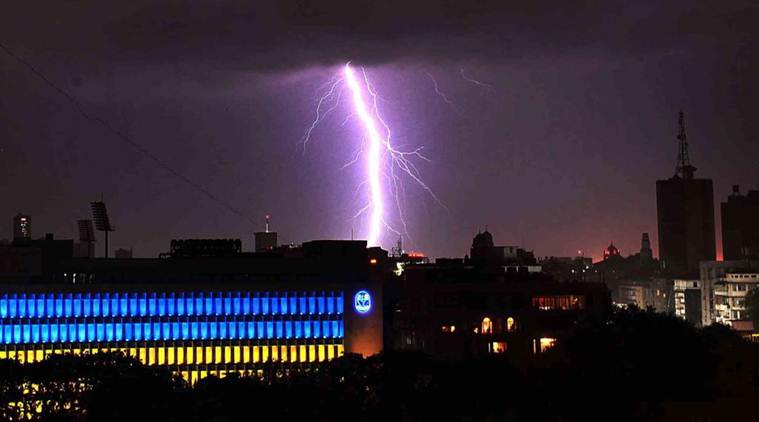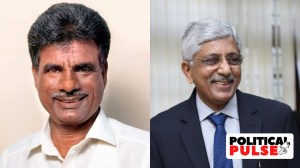- India
- International
ISRO’s satellite info set to enhance India’s lightning forecasts: MoES
Over 200 deaths caused by lightning strikes have been reported in the last two months from Bihar and east Uttar Pradesh.
 In 2019 and 2016, 75 and 424 deaths, respectively, were reported due to lightning strikes, according to the Climate of India reports released by IMD. (Express photo by Pradip Das)
In 2019 and 2016, 75 and 424 deaths, respectively, were reported due to lightning strikes, according to the Climate of India reports released by IMD. (Express photo by Pradip Das)
The Ministry of Earth Sciences (MoES) is in talks with the Indian Space Research Organisation (ISRO) and it has requested the latter to install lightning detectors on its geosynchronous satellites. This will help enhance the monitoring of lightning and thunderstorm events over the Indian region.
Speaking during a webinar ‘Thunderstorms and Lightning’, jointly organised by the National Institute of Disaster Management, Ministry of Home Affairs, and India Meteorological Department (IMD) on Tuesday, MoES Secretary M Rajeevan said, “Even though we have a good network to monitor thunderstorm and lightning, it can be further improved with the help of satellite information. We are presently in talks with ISRO. If all goes well, then within the next one year, there would be geosynchronous satellites mounted with lightning sensors, which will provide continuous observations, thereby helping improve thunderstorm tracking.”
Over 200 deaths caused by lightning strikes have been reported in the last two months from Bihar and east Uttar Pradesh. Most of the victims were farm labourers involved in kharif sowing since it is the beginning of monsoon season. Usually, the period between June and September sees the highest number of lightning and thunderstorm events along the east and northeast regions of India, said experts at IMD.
In 2019 and 2016, 75 and 424 deaths, respectively, were reported due to lightning strikes, according to the Climate of India reports released by IMD.
In addition to satellite information, Doppler weather radars can be best suited to monitor thunderstorms, noted Rajeevan. “Currently, there are 26 Doppler radars operating and over the next two years, it will be expanded to 50, which will significantly improve the network of monitoring. There are also plans to set up a testbed, somewhere in the northeast region that experiences frequent thunderstorms. This facility will carry out dedicated studies on thunderstorm occurrences,” said the MoES Secretary.

Thunderstorms and lightning are common over tropical countries and India is among the handful of countries, globally, to issue lightning warnings, said Mrutyunjay Mohapatra, director general of IMD. There is also a mobile-based app named Damini, which provides real-time lightning information over a region.
As they are very short-duration events lasting not more than two hours, monitoring thunderstorms is a real challenge for meteorologists.
Mohapatra said, “Using our forecast models and networks, we issue thunderstorm forecasts from one to five days in advance. Nowcast warnings are issued three hours prior to lightning events. But, the biggest challenge is predicting thunderstorms and issuing warnings that will be relayed to the last mile and save lives, given the size of our country.”
Since 2018, IMD, the Indian Air Force and Indian Institute of Tropical Meteorology, Pune, have collaborated in establishing a lightning network, which relays real-time updates about lightning possibilities over a region every five minutes.
“However, we are still unable to pinpoint the exact location where lightning could strike, and the time at which it would strike, which is where more efforts are needed. We plan to collaborate with academic institutions and incorporate Artificial Intelligence into forecasting techniques,” said Rajeevan, who added that the general public and the most vulnerable communities must be made aware about lightning, ways to stay protected and measures to be adopted so that lives are not lost to these lightning strikes.
Also in attendance for the webinar was Nityanand Rai, MoS, Home Affairs, who said, “Lessons from every disaster should be studied and innovative ways must be devised, so that there are improved mechanisms prepared to deal with future disasters.”
Must Read
Apr 23: Latest News
- 01
- 02
- 03
- 04
- 05


































